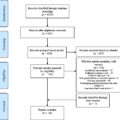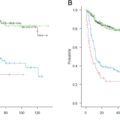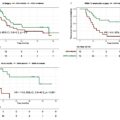Highlights
- •
Preservation of submandibular gland during lymph node dissection is oncologically safe in selected patients with OSCC.
- •
Temporal fossa is an anatomical site receiving very low dose of radiation in patients with OSCC treated by radiotherapy.
- •
SMG transfer into the temporal fossa could help for reducing radiation-induced xerostomia in patients with OSCC.
Abstract
Oral squamous cell carcinoma (OSCC) is associated with an important mortality and morbidity related to surgery and radiotherapy. In particular, radiation-induced xerostomia has a major impact on patient’s quality of life. Although intensity-modulated radiation therapy allowed mean dose reduction to the spared submandibular gland (SMG) in patients with head and neck squamous cell carcinoma, xerostomia is still an important sequela for patients treated for an OSCC. SMG surgical transfer into anatomical subsite receiving very low radiation doses is a promising approach to prevent xerostomia. Based on a literature review and data from our institutional cohort, we analyzed the oncological safety of SMG preservation. Then, we discussed the feasibility and relevance of SMG transfer into the temporal fossa, in order to prevent radiation-induced xerostomia in patients with OSCC.
Introduction
Oral squamous cell carcinoma is associated with a substantial morbidity and mortality, which is mainly due to a high risk of loco-regional recurrence. Because of the incidence of lymph node metastasis, a rigorous neck node management is crucial for patients suffering from OSCC. However, de-escalation strategies have been recently proposed for neck management of those patients. In particular, in patients with early OSCC (cT1-T2N0), recent randomized clinical trials demonstrated the oncologic equivalence of the sentinel node biopsy (SN) and neck lymph node dissection (ND) with lower morbidity in the SN arm. Moreover, preservation of submandibular gland during ND could also be considered regarding the low incidence of invasion of the SMG in patients with OSCC . In patients with advanced OSCC requiring adjuvant radiation therapy, the SMG preservation could allow its transposition into a poorly irradiated area in order to prevent radiation-induced xerostomia . Although SMG transfer into the temporal fossa has not been yet performed in patients with OSCC, the purpose is to review the literature and our institutional cohort data in order to discuss its safety and feasibility to prevent radiation-induced xerostomia in this clinical setting.
Oncological safety of submandibular gland preservation
Literature review
A previous systematic review and meta -analysis, based on a total of 4458 patients and 5037 glands analyzed, showed a SMG involvement rate of 1.8 % when considered per patient, and 1.6 % when considered per gland . We updated the literature review using Pubmed database on June 12th, 2024 to retrieve studies for submandibular gland involvement in patients with oral squamous cell carcinoma. We excluded case reports and studies including less than 10 patients. A total of 31 studies were identified ( Table 1 ), with six studies including more than 300 patients . In total 5665 patients and 6309 submandibular glands were analyzed. The incidence of SMG invasion is low according to previous retrospective (27/31) and prospective (4/31) studies reporting a rate between 0 to 9.5 % per gland and 10 % per patients. The rate of involvement of the submandibular gland was 2.2 % per gland (138/6309) and 2.4 % (138/5665) per patient. Even if most of the articles were retrospective studies, this review suggests the feasibility of the SMG preservation in patients with oral squamous cell carcinoma. Notably, a non-randomized prospective cohort study showed that the 5-year locoregional control as well as the disease-specific survival rates were not different between the SMG-sparing and SMG-excision groups .
| Pubmed ID | Year | Data collection | Total patients | Total SMG | Nb of involved SMG | % invasion per gland | % invasion per patient |
|---|---|---|---|---|---|---|---|
| 15,459,920 | 2004 | retrospective | 169 | 196 | 9 | 4,6 | 5,3 |
| 19,360,744 | 2009 | retrospective | 342 | 383 | 7 | 1,8 | 2,0 |
| 18,607,927 | 2009 | retrospective | 201 | 316 | 2 | 0,6 | 0.9 |
| 19,881,371 | 2009 | retrospective | 130 | 171 | 6 | 3,5 | 4,6 |
| 19,475,546 | 2009 | retrospective | 132 | 253 | 1 | 0,4 | 0,7 |
| 20,737,484 | 2011 | prospective | 20 | 33 | 0 | 0 | 0 |
| 21,729,447 | 2011 | retrospective | 52 | 52 | 1 | 1,9 | 1,9 |
| 22,017,858 | 2012 | retrospective | 69 | 69 | 2 | 2,9 | 2,9 |
| 22,944,141 | 2012 | retrospective | 194 | 229 | 3 | 1,3 | 1,5 |
| 23,853,397 | 2013 | retrospective | 236 | 294 | 13 | 4,4 | 5,5 |
| 25,149,835 | 2014 | retrospective | 110 | 110 | 2 | 1,8 | 1,8 |
| 25,621,270 | 2015 | retrospective | 94 | 98 | 3 | 3,1 | 3,2 |
| 25,724,734 | 2015 | retrospective | 175 | 163 | 6 | 3,7 | 3,4 |
| 27,508,132 | 2016 | retrospective | 112 | 112 | 0 | 0 | 0 |
| 27,232,643 | 2016 | prospective | 137 | 152 | 0 | 0 | 0 |
| 27,450,469 | 2017 | retrospective | 176 | NA | 2 | NA | 1,1 |
| 29,720,283 | 2018 | retrospective | 155 | 183 | 2 | 1,1 | 1,3 |
| 30,401,471 | 2018 | retrospective | 586 | 622 | 26 | 4,2 | 4,4 |
| 31,864,860 | 2019 | retrospective | 95 | 116 | 4 | 3,4 | 4,4 |
| 31,876,743 | 2019 | prospective | 330 | 363 | 7 | 1,9 | 2,1 |
| 31,866,411 | 2020 | retrospective | 302 | 355 | 1 | 0,3 | 0,3 |
| 33,968,233 | 2020 | retrospective | 149 | 157 | 7 | 4,5 | 4,7 |
| 33,940,532 | 2020 | retrospective | 303 | 366 | 4 | 1,1 | 1,3 |
| 33,109,130 | 2021 | prospective | 106 | 106 | 0 | 0 | 0 |
| 34,900,678 | 2021 | retrospective | 145 | 173 | 1 | 0,6 | 0,7 |
| 33,654,687 | 2021 | retrospective | 131 | NA | 1 | NA | 0,7 |
| 34,972,007 | 2021 | retrospective | 60 | 60 | 0 | 0 | 0 |
| 35,110,897 | 2021 | prospective | 60 | 63 | 6 | 9,5 | 10 |
| 36,742,853 | 2022 | retrospective | 83 | 83 | 6 | 7,2 | 7,2 |
| 37,280,380 | 2023 | retrospective | 642 | 852 | 12 | 1,4 | 1,8 |
| 37,871,650 | 2024 | retrospective | 173 | 179 | 4 | 2,2 | 2,3 |
| Total | 5665 | 6309 | 138 | 2,2 | 2,4 |
Stay updated, free articles. Join our Telegram channel

Full access? Get Clinical Tree







